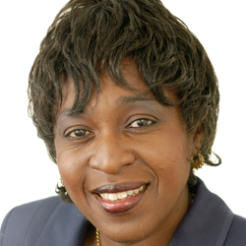Tesse Akpeki reports on the key findings from the US-based BoardSource Nonprofit Governance Index 2012.
Fresh from the BoardSource Conference 2012 in Chicago, I have brought back some thoughts.
The Nonprofit Governance Index 2012 produced by BoardSource deepened the inquiry into boardroom culture by adding several items on inclusive practices and shared leadership to focus on contribution and support. The additional perspective captures unique facets of boardroom interpersonal support and collaborative decision-making.
Board-member contributions and respectful listening appear high, but generally conversations are driven by a few individuals. Board-member peer support appears low, with only 51 per cent of chief executives agreeing that board members help develop each other’s strengths.
Board performance improved with a formal induction process where board members were able to come up-to-speed and be more knowledgeable about the organisation, its work and have an increased understanding of their legal and governance responsibilities. Boards are doing better with their internal responsibilities than with the responsibilities that are externally-facing (for instance community relations).
Cuts and cost-savings
Encouragingly, compared to 2010 more organisations are launching major initiatives and fewer are instituting cuts in staff, budgets and other cost-saving manoeuvres.
A third of of chief executives spent between one and 10 hours per month on board work; this is balanced by one-fifth of CEOs who spend more than 30 hours per month.
Larger organisations are still more likely to have a majority male board.
The most common structure for board-member service is two consecutive three-year terms; the second is three consecutive three-year terms. Over half of chief executives (54 per cent) feel their committees work well and support the work of the board.
Technology for meetings
In terms of meeting practices and technology, there has been a small increase in the use of productive meeting tools, such as dashboards, consent agendas, web-based board portals (or other password-protected sites) and telecommunications from 2010 to 2012, with more boards holding tele/video conferences.
Trends in board performance evaluation appear to be moving in the right direction, with 55 per cent of the Governance Index respondents reporting that they have conducted a formal self-assessment in the past three years, compared to 50 per cent in 2010.
Diversity
While a majority of respondents agree that increasing racical/ethnic gender and age diversity would bolster their efforts to advance the organisation’s mission, more expressed satisfaction with board gender diversity (64 per cent) and age diversity (62 per cent).
Details of the index can be found at www.boardsource.org









